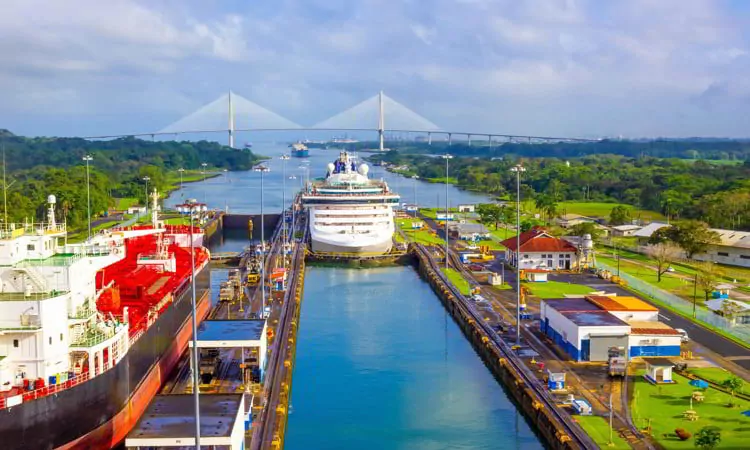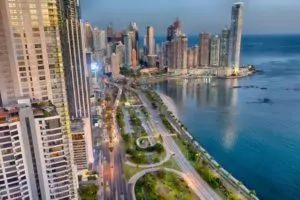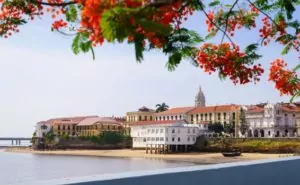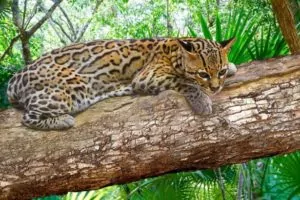
How Panama Became A Great Economic Success Story
Is Panama 2022 A Buy?
Why were Lief and I drawn to Panama in the first place, some 24 years ago?
And why have we invested more in this country than anywhere else in the world?
It’s partly because Panama’s is one the greatest economic success stories in the world.
Massive Growth Has Been Due Largely To Foreign Investment
When the United States handed ownership of the Panama Canal to Panama in 1999, the country fell immediately into recession…
It needed to find a way to replace the disposable income that all those U.S. GIs had been spreading around and quick.
Step one was to get it from tourists and retirees.
Panama looked next-door to Costa Rica, whose economy is based almost entirely on income from foreign tourists and resident retirees. We could do that, too, the Panamanians figured, and they began working in earnest to attract the attention of North Americans.
Panama targeted eco-tourists and budget-conscious Baby Boomers looking for places where they could stretch their retirement nest eggs.
It introduced a pensionado residency program, improving on the model Costa Rica had made famous, offering resident retirees discounts on everything from restaurant tabs and movie tickets to plane fares and prescription medications.
Retirees living in the country, Panama figured, like the American GIs, would be spending on a monthly basis.
More recently, major projects such as the new Panama Convention Center (the largest in Latin America) and the new cruise ports on the Amador Causeway will bolster even more tourists.
Step two targeted investment from international companies.
Panama targeted corporations, playing up the incomparable advantage of its geographic position. This country, literally at the hub of the Americas, is ideally located for a business doing trade across the western hemisphere.
Plus, thanks to the investment made over decades by the U.S. military, the infrastructure in Panama City is in a league of its own for the region, and much of the population, thanks again to the extended American presence, is English-speaking.
Panama wooed companies like Dell, Procter & Gamble, Adidas, Caterpillar, Nike, Estée Lauder, and others shopping for the best place to locate their regional headquarters.
Today, more than 150 multinational corporations have this country’s capital as their base, employing, among them, thousands, including hundreds of foreign management staff.
All of these people need places to live, and the imported foreign executives have helped fill buildings that many predicted would sit empty long after completion.
The Influence Of The Panama Canal In The Economy
Panama has a second incomparable advantage with its Canal, which it expanded in 2016 and which generates more than US$2.6 billion of annual revenue. That’s a lot of cash flow for a country of 4.2 million people, and the amount increases every year.
Panama wisely continues to invest much of this canal income into infrastructure projects, expanding its highway systems, building new hospitals, and generally making the country ever more appealing for the foreign investor.
Coupled with its international banking and financial services industries, the Canal economy has helped to position Panama as a regional safe haven…
Colombians, Venezuelans, and Argentines like to park their capital in Panama City’s dollar-denominated condos, fueling the city’s property markets.
Why We Chose Panama
Over the two-plus decades since the Americans pulled out, Panamanian markets have cycled, including a drop in property prices after the 2008 global crisis, but the overall trajectory has been and continues up.
We first recommended Panama as a buy in 1998, and we are more bullish on this country’s prospects today than ever… the current pandemic marketplace notwithstanding.
Its undervalued property markets put Panama on our radar back in 1998, and, in the nearly two-and-a-half decades since, we have made a series of real estate investments here…
From a pre-construction rental, a Casco Viejo renovation, and a commercial building (that houses our Panama-based staff) in the capital city to teak, timber, and fruit plantations in the interior…
As well as Los Islotes on the country’s Pacific coast, the biggest and longest-term property undertaking of our careers.
When I visited Panama City for the first time two-and-a-half decades ago, most of what we see from the windows of our Avenida Balboa apartment (which was, as an aside, one of the first and also one of the best-returning property investments we made in this country) did not exist.
Today we have a long view of central Panama City on the Bay of Panama, from Punta Paitilla and Punta Pacífica in one direction…


That meant moving to the country full-time… which meant enrolling our son in school and committing in the most personal ways.
Our reasons for picking Panama were all financial, but that’s just one face of this little country.
Panama is also home to more than hundreds of different species of birds, mammals, and reptiles and amphibians from howler monkeys to caimans… from ocelots to crocodiles… many species of eagle, humpback whales, dolphins, and hammerhead sharks…

A natural land bridge connecting the two continents, Panama is home to both North and South American species of wildlife. About 34% of the country’s land area is protected in 14 national parks, more than a dozen forest reserves, and 10 wildlife refuges.
The country is blessed with two long coasts and myriad sand-fringed islands, plus some of the best deep-sea fishing, surfing, snorkeling, and scuba diving anywhere. Around its Coiba island lies the largest coral reef on the Pacific side of the Americas.
This is a U.S.-dollar jurisdiction—that is to say, Panama has been using the U.S. dollar as its currency for about 100 years, meaning an American living or retired here has no currency-exchange risk to worry about.
Panama is an established medical tourism destination and home to the Johns Hopkins-affiliated Punta Pacífica Hospital in Panama City.
It’s home to many UNESCO World Heritage Sites, from Casco Viejo, Panama Viejo, and the forts of San Lorenzo and Portobelo to Coiba National Park and La Amistad Reserve.
It’s the biggest international banking center in the region and one of the few Latin markets where it’s possible for you, as a foreigner, to borrow locally to buy real estate.
Panama is also a true tax haven, a place where you can live and do business tax-free.
The government is pro-business and foreigner-friendly, meaning outsized incentives for foreign retirees and investors, and the country offers more than a dozen visa options (including the Friendly Nations visa that grants work permits), making it easy to become a full-time resident if that’s something you’d like to do.
In the current context, Panama stands out perhaps more than ever as a top choice for property investment.
Key local developers here have long track records spanning decades, meaning you can feel confident when buying, and, right now they’re more open to flexible and creative financing rates and plans than they have been in a long time.
That, dear reader, is why Lief and I targeted Panama all those years ago…
And why we continue to invest our time and money here today all these years later.
Kathleen Peddicord
Founding Publisher, Live And Invest Overseas



